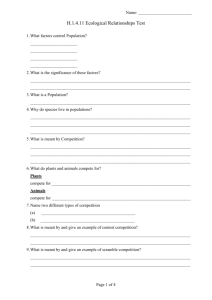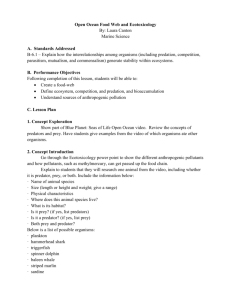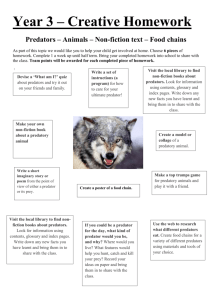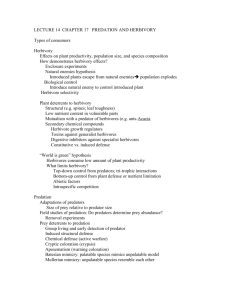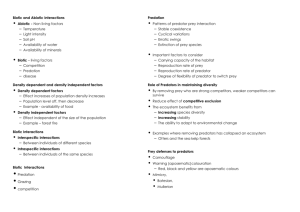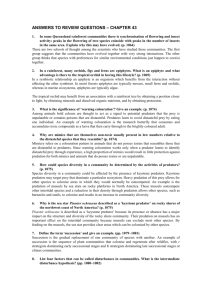Population Cycles in Mathematical and Laboratory Models
advertisement
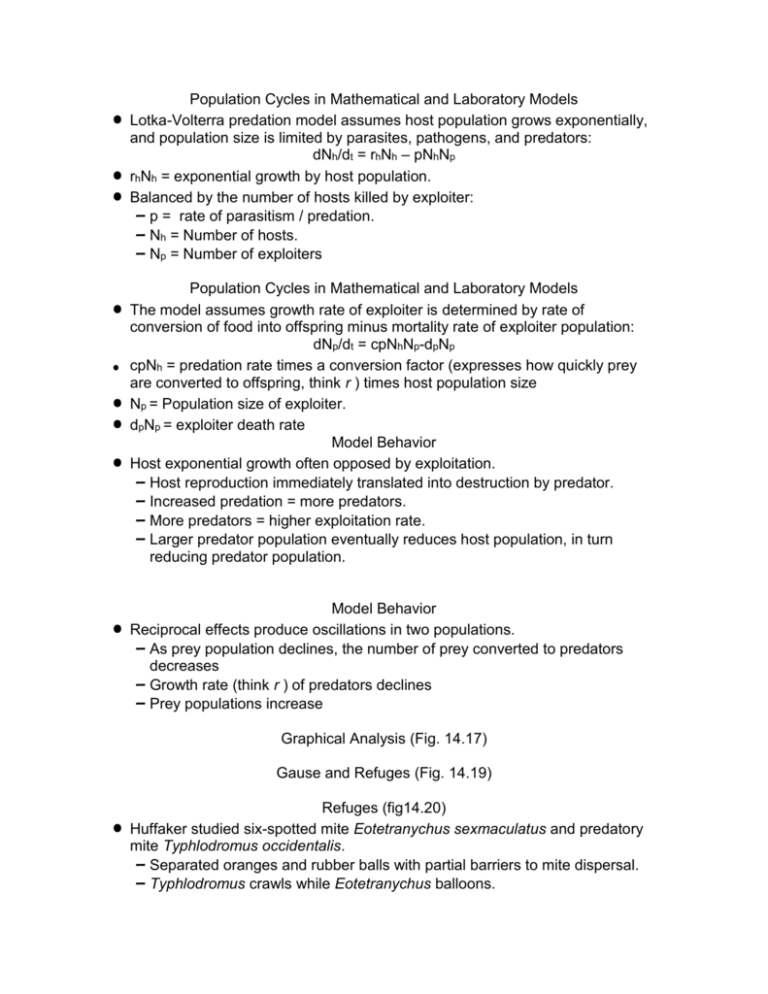
• • • Population Cycles in Mathematical and Laboratory Models Lotka-Volterra predation model assumes host population grows exponentially, and population size is limited by parasites, pathogens, and predators: dNh/dt = rhNh – pNhNp rhNh = exponential growth by host population. Balanced by the number of hosts killed by exploiter: – p = rate of parasitism / predation. – Nh = Number of hosts. – Np = Number of exploiters Population Cycles in Mathematical and Laboratory Models • The model assumes growth rate of exploiter is determined by rate of conversion of food into offspring minus mortality rate of exploiter population: dNp/dt = cpNhNp-dpNp • cpNh = predation rate times a conversion factor (expresses how quickly prey are converted to offspring, think r ) times host population size • Np = Population size of exploiter. • dpNp = exploiter death rate Model Behavior • Host exponential growth often opposed by exploitation. – Host reproduction immediately translated into destruction by predator. – Increased predation = more predators. – More predators = higher exploitation rate. – Larger predator population eventually reduces host population, in turn reducing predator population. • Model Behavior Reciprocal effects produce oscillations in two populations. – As prey population declines, the number of prey converted to predators decreases – Growth rate (think r ) of predators declines – Prey populations increase Graphical Analysis (Fig. 14.17) Gause and Refuges (Fig. 14.19) • Refuges (fig14.20) Huffaker studied six-spotted mite Eotetranychus sexmaculatus and predatory mite Typhlodromus occidentalis. – Separated oranges and rubber balls with partial barriers to mite dispersal. – Typhlodromus crawls while Eotetranychus balloons. – Provision of small wooden posts to serve as launching pads maintained population oscillations spanning 6 months. Size as Refuge (Fig. 14.26, 14.27)



